Translate this page into:
54th International Congress of Aviation and Space Medicine, Bangalore : An Overview
‘Collective wisdom’ is the panacea for most predicaments. The history of Aerospace Medicine is replete with innumerable examples where collective wisdom has been able to assail seemingly un-surmountable crises. Treatise, AGARDs, Conferences Proceedings, Congress, Continuing Medical Education Programmes (CMEs), symposia and addresses are some forum where intelligentsia and academia speak up and resolve collectively what persons working in isolation label as problems.
The 54th International Congress of Aviation and Space Medicine (ICASM) was held from 10- 14 September 2006 at Bangalore. The event was organized by the Indian Society of Aerospace Medicine (ISAM) under the aegis of the Indian Air Force (IAF) and organizational support from Head Quarters Training Command, IAF.
The Indian Society of Aerospace Medicine was founded in 1952 with a charter to (a) advance the science and art of Aviation and Space Medicine, (b) establish and maintain co-operation between medical and other sciences concerned with aeromedicai development and progress and (c) promote, protect and maintain safety in Aviation and Space ventures. Towards furthering this cause the Society promotes the specialty by organising annual conferences, facilitating its members to interact with specialists across the world, publishing a biannual Indian Journal of Aerospace Medicine and sponsoring research work to foster the spirit of the subject.
The International Academy of Aviation and Space Medicine (IAASM) promotes Aviation Medicine by hosting its Annual Congress, the International Congress of Aviation & Space Medicine (ICASM) in a different country each year. For the year 2006, the ICASM was organized at Bangalore, India and hosted by the ISAM. The first announcement for the Congress was distributed during the 76th AsMA at Kansas City (USA) and the 53rd ICASM in Sep 2005 held at Warsaw, Poland. Thesecond announcement was distributed at the 77th AsMA Meeting at Orlando (Florida, USA) in May 2006 and was also mailed to all members of IAASM and AsMA. The Indian delegates, ISAM life-members and Indian aviation industry were informed by letters, announcements and signals. A website for the Congress http://www.icasmindia2006.org was hosted and was an important tool for information sharing between delegates, sponsors and organizers. The response to the announcements from over 200 foreign delegates and 144 (one hundred and forty four) of the foreign delegates finally registering for the Congress was heartening for the organizers.
A 54th ICASM logo (Fig. 1) was designed and was incorporated in all the publications and hoardings. The theme of the Congress was ‘Aerospace Medicine - The road ahead’.
The Congress was inaugurated by Air Chief Marshal SP Tyagi PVSM AVSM VM ADC, Chief of the Air Staff (CAS), Indian Air Force, who is also the Chief Patron of the Society. The traditional Indian lamp-lighting by dignitaries marked the inauguration of the Congress (Fig. 2).
In the inaugural address (Fig. 3), CAS brought out the role of Squadron Medical Officer and the contributions of the ISAM to Aerospace Medicine and in particular, the IAF. CAS brought out that the ISAM has been doing pioneering work in research and disseminating latest medical practices and techniques to all the aviation related professionals. He remarked that the speciality of Aerospace Medicine is multidimensional and incorporates tenets from several disciplines to ensure the right bondage between man and machine. With the machine becoming more and more sophisticated, powerful in performance, complex in design and highly manoeuvrable, its limits have to be contained to the limits of human endurance, both physical and psychological. Ensuring the aviator’s physiological and psychological health to meet the demands of newer machines is a critical role that the aerospace medicine specialists are performing.
The Congress Souvenir was released by Air Marshal BN Gokhale AVSM VM, Air Officer Commanding in Chief, Training Command, Indian Air Force (Fig 4).
The release of the latest volume of Indian Journal of Aerospace Medicine was done by Surgeon Vice Admiral VK Singh PVSM AVSM VSM PHS, Director General Armed Forces Medical Services & Senior Colonel Commandant, AMC. The Indian Journal of Aerospace Medicine is entering its 50th year of publication. It is published biannuaily. Its contents, quality and review process has evolved over the years to match ajournai of international status.
The prestigious André Allard Memorial Lecture was delivered by Dr BM Hegde, eminent cardiologist and former Vice-Chancellor of the Manipal Academy of Higher Education (Fig. 5). He spoke on “Regular check up & non-linear time evolution in the dynamic human system” and enthralled the audience with his wit, unique style of rendition of the lecture and his ability to question the time-honoured techniques of medical evaluation. He brought out that in medical physiology, since the 12”‘ century, we follow the reductionist science of linearity, milieu interior, and rhythmicity. There is a need to relook and think in terms of wholism, chaos and non-linearity wherein the real answers may lie. He cautioned the audience against the use of ‘evidence’ which may be motivated, ‘statistics’ which may be doctored and ‘commercially driven over-investigation’.
The inauguration of the Scientific Exhibition was done by the CAS. In addition to the conventional stalls by the aeromedical industry, there were stalls from (a) Indian Air Force in aid of civil power, (b) Institute of Aerospace Medicine highlighting innovations done during the practice of Aerospace Medicine in the LAF and (c) Medical Training Centre who demonstrated life support and stretcher drill for the delegates (Fig 6).
The Scientific Sessions commenced with the John Ernsting panel on ‘Therapeutic controversies in Aviation’. This session witnessed papers presented by four world authorities on topics that cause dilemma in aircrew evaluation. They discussed the paradigm for applying the knowledge base for medical conditions amongst aviators, both military and civil. Subsequent sessions were marked with high quality scientific papers and interesting focused discussions/ deliberations on current issues involving the entire gamut of Aerospace Medicine viz. Space Medicine, Civil Aerospace Medicine, Clinical Aerospace Medicine, Acceleration & Vestibular physiology, Human Factors and the like. Congress CD was distributed to all delegates.
The guest lectures during the Congress were delivered by :
(a) Dr D Prabhakaran from All India Institute of Medical Sciences on ‘Epidemiology of IHD in India’. He brought out that the Indian population was specially susceptible to IHD due to a host of genetic and environmental factors and preventive measures and lifestyle changes are the only answer to these.
(b) Wg Cdr SS Iyengar VSM (Retd.) from St Johns Hospital Bangalore on IHD in the young aviator. He stressed on the need for focused investigation and follow up to ensure that the aircrew population remains healthy by adopting lifestyle changes and exercise patterns.
The prestigious Subroto Mukherjee memorial oration was delivered by Shri G Madhavan Nair, Chairman Indian Space Research Organisation (ISRO) and Secretary, Department of Space, Govt, of India on ‘Indian Space Programme’. He brought out a brief history of the Indian Space programme and introduced the audience to the applications of the same (Fig. 7). He briefly touched upon the ‘Indian manned mission to moon’ and gave the road map towards achieving this goal, which would entail dedicated work and aeromedicai advise.

- 54th ICASM Logo
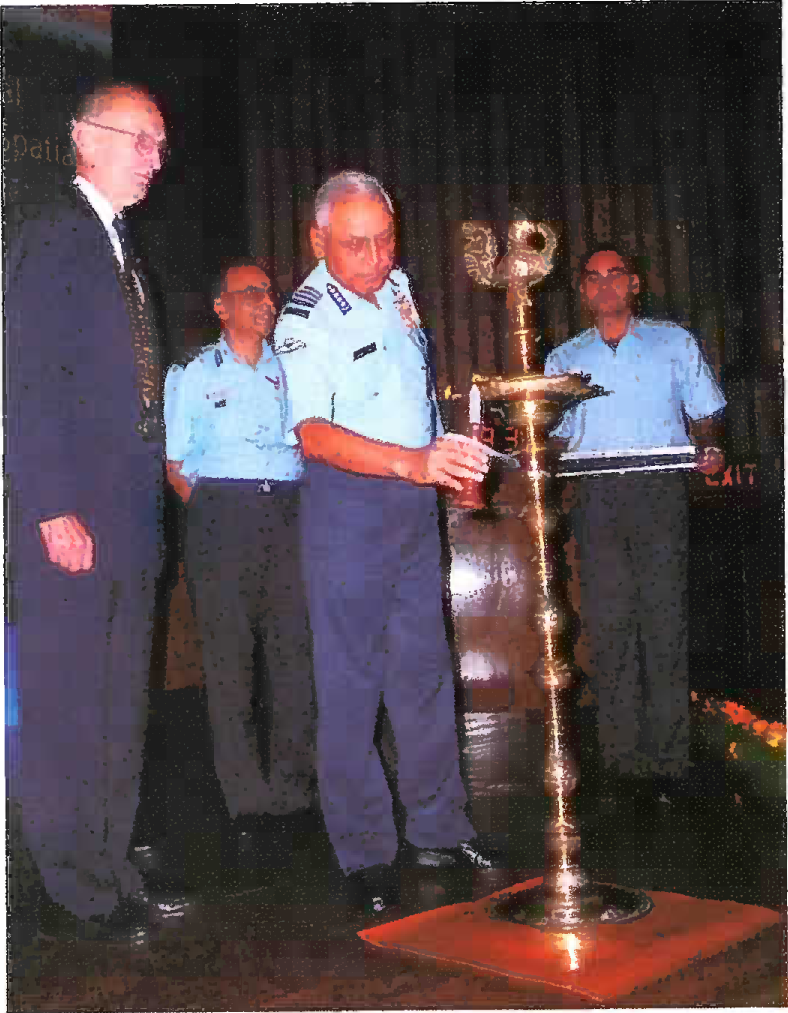
- CAS inaugurating the Congress
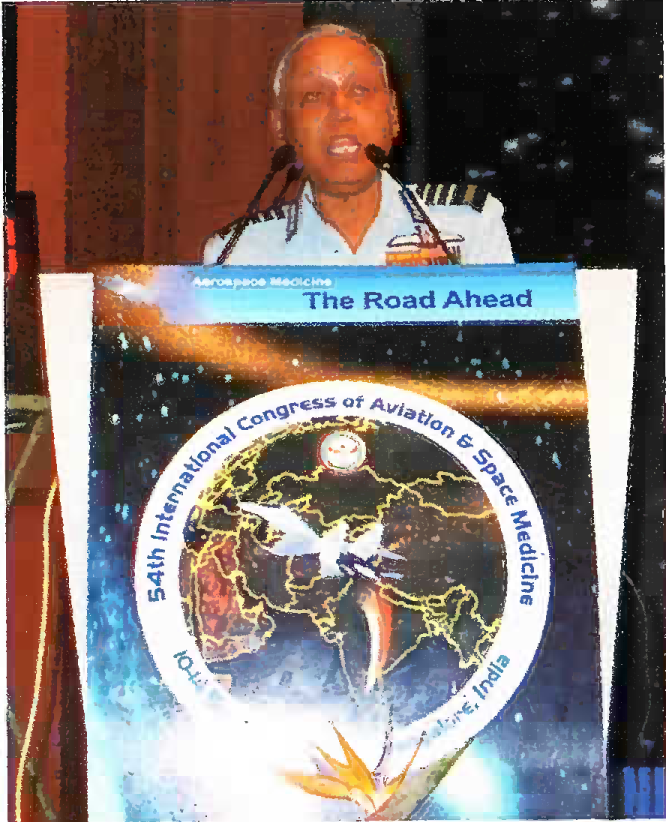
- CAS addressing the Congress
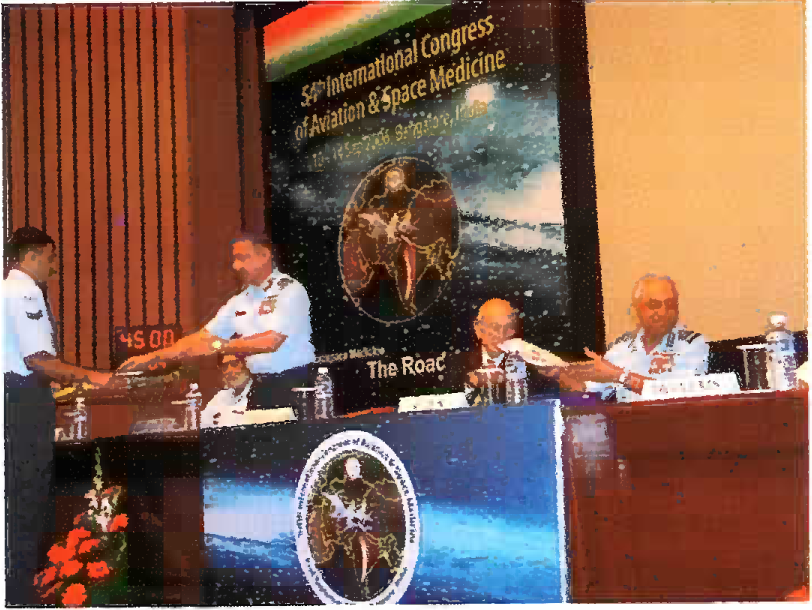
- AOC-in-C, TC IAF releasing the Souvenir
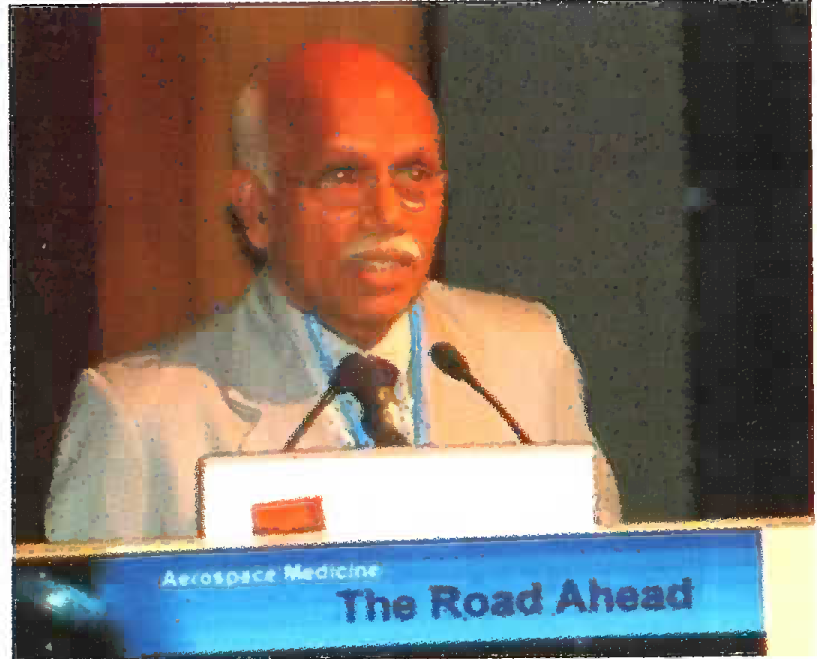
- Dr BM Hegde delivering the Andre Allard Memorial Lecture

- CAS witnessing the MTC demonstration during Scientific Exhibition
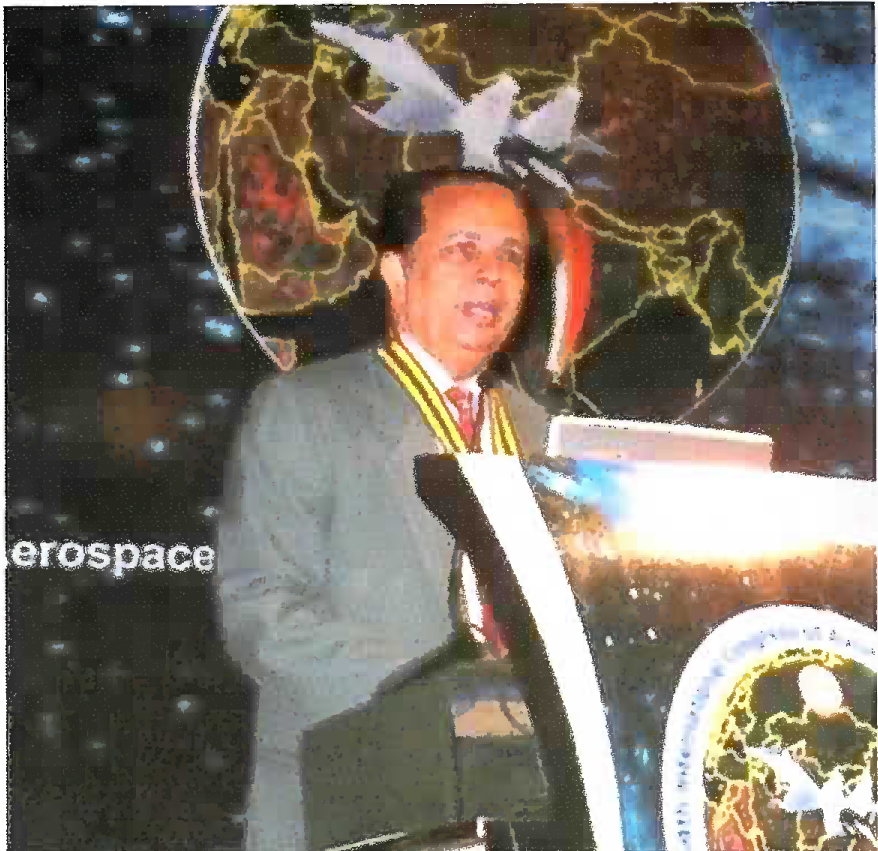
- Shri G Madhavan Nair delivering Subroto Mukherjee Memorial Oration.

- Display by the SKAT
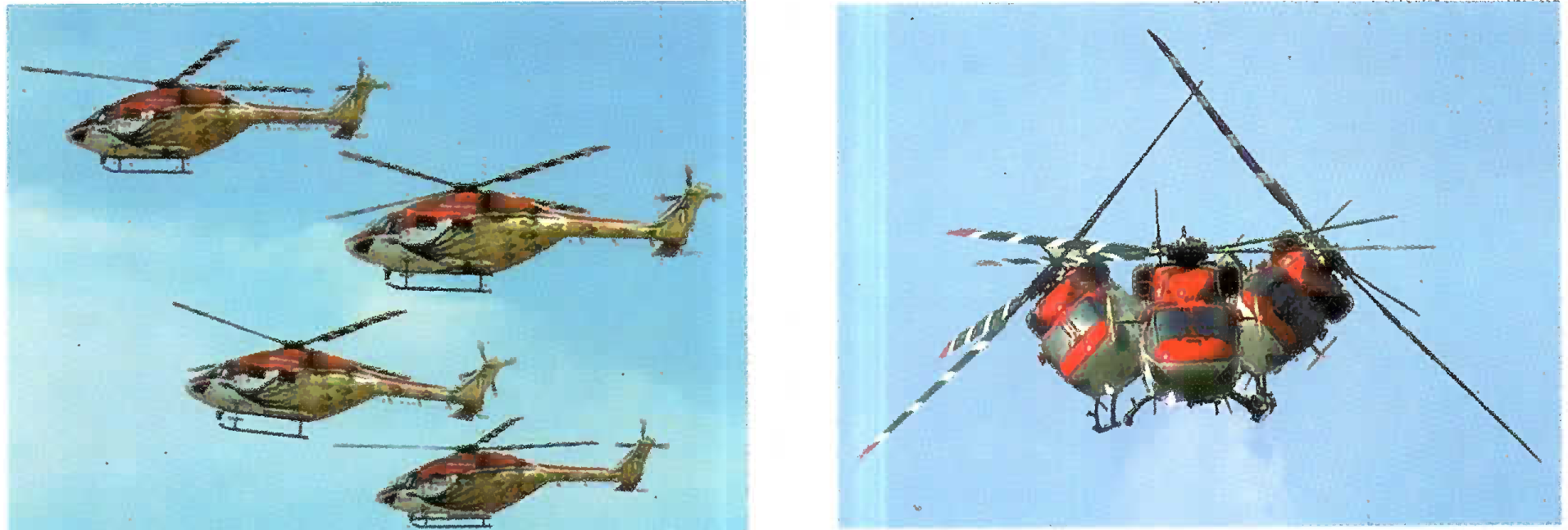
- Display by the Sarang Team
An airshow consisting of the Surya Kiran Aerobatic Display (SKAT) and the ALH (Sarang) display was organized under the aegis of Training Command (Fig 8 & 9). The nine Surya Kiran aircraft display with their myriad demonstrations left a lasting impression on the audience. The Sarang team display, arguably the only helicopter aerobatic display in the world was a treat to the delegates, which they relished with contentment. A static display of LAF aircraft was also organized. Both these activities were coordinated by AF Stn Yelahenka and were appreciated a lot by the delegates who witnessed them. The air-show for delegates of ICASM is unparalleled in the history of ICASM. It underlines the positive synergy between the operational community and the medical fraternity of the Indian Air Force.
The organisation of the Congress was possible with the support of the Indian Air Force (IAF), in particular the Training Command of Indian Air Force. The overt involvement of the IAF was positively commented upon by delegates from India and abroad. Air Mshl HK Maini VSM PHS, DGMS(Air) and President ISAM, President of the Organising Committee, AVM NK Bhandari VSM, the Chief Coordinator, Air Cmde Pankaj Tyagi VSM, Commandant IAM and Executive Coordinator, Gp Capt PS Sodhi, Organising Secretary of the 54th ICASM and Gp Capt CK Ranjan, Secretary ISAM toiled relentlessly under the able guidance and support from Air Marshal BN Gokhale AVSM VM, Air Officer Commanding in Chief, Training Command, Indian Air Force and his team. The result was a landmark Congress, the memories of which shall stay with all those who participated in it for posterity.
The Congress meant different things to subsets of persons. It was an opportunity for a reunion among friends and peers, a forum for exchanging notes, clarifying doubts, meeting the icons of the speciality in flesh, touching base with reality, experiencing part of India’, advertising wares, rededicating energies to another year of professional activity, the love of the subject, the opportunity to present scientific papers... and much more. To each, their own. We, as organizers, enjoyed the process, the timelines, the follies, the praises and above all - ‘the experience of playing host to an elite and exquisite community’ of practitioners of aerospace medicine.





